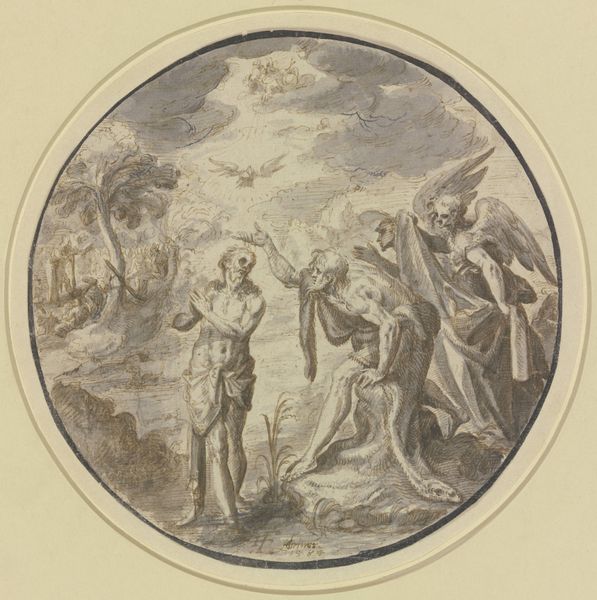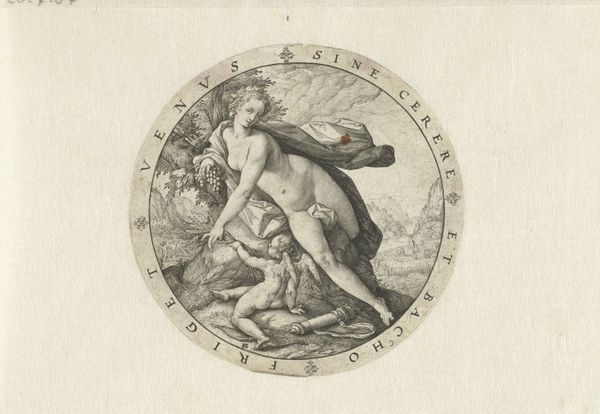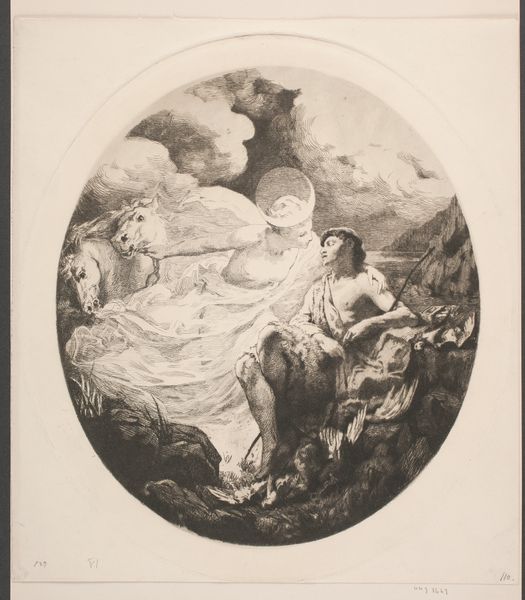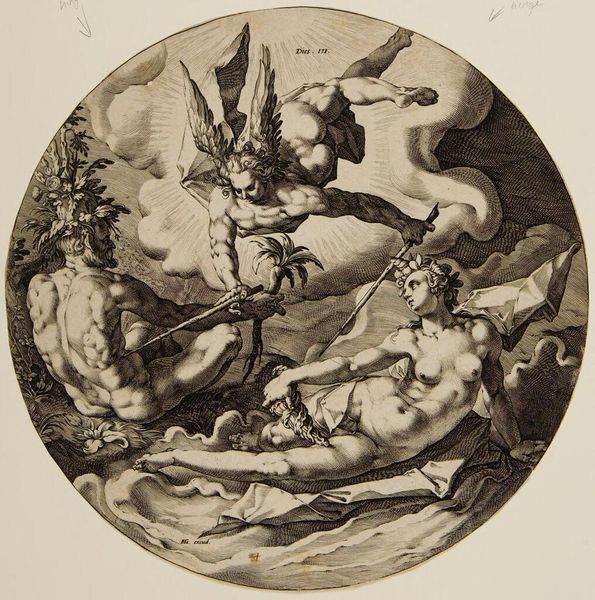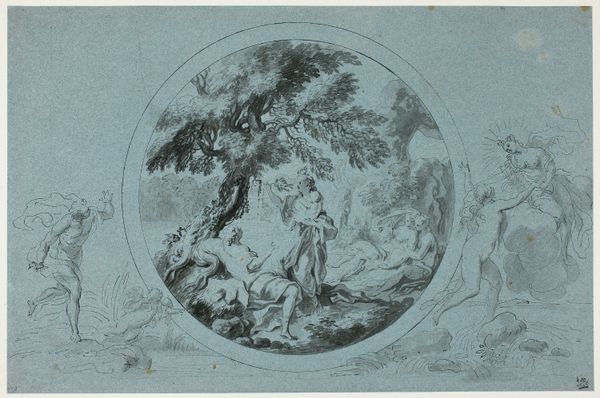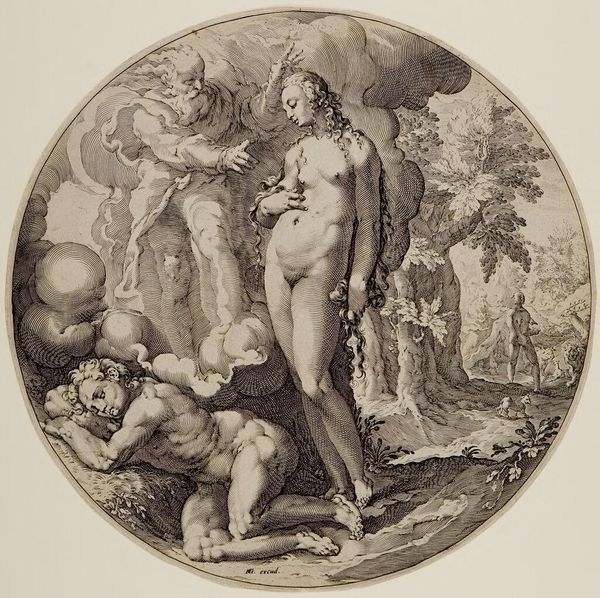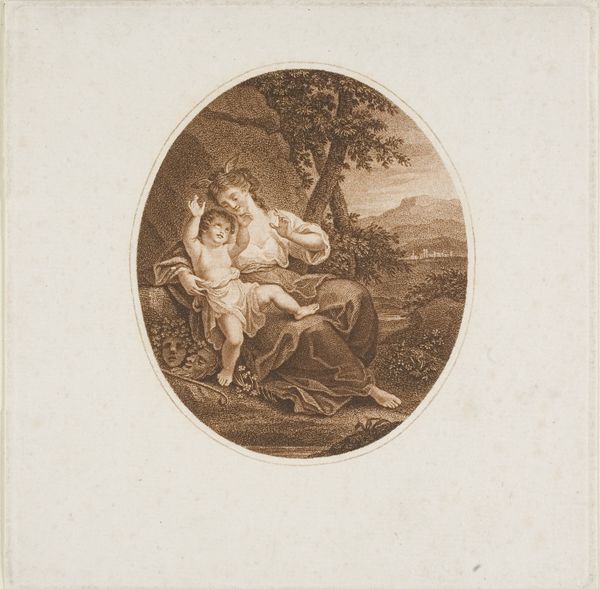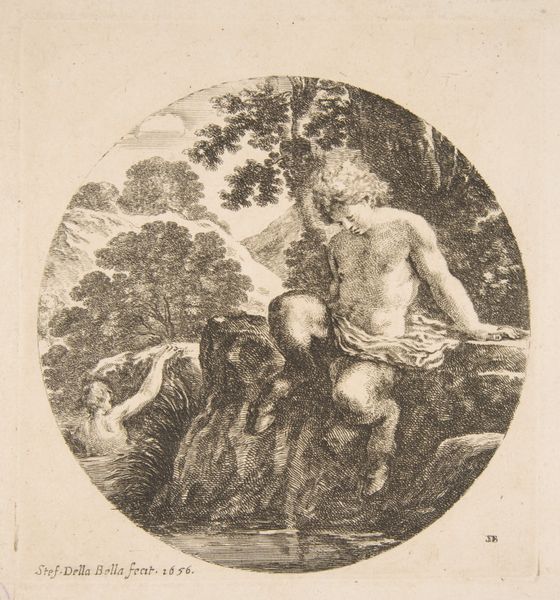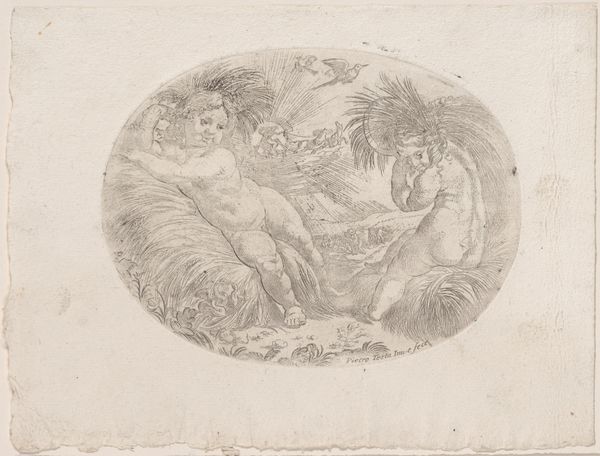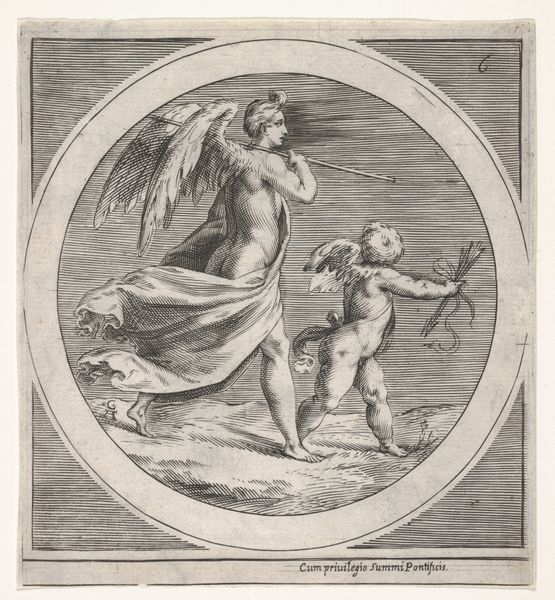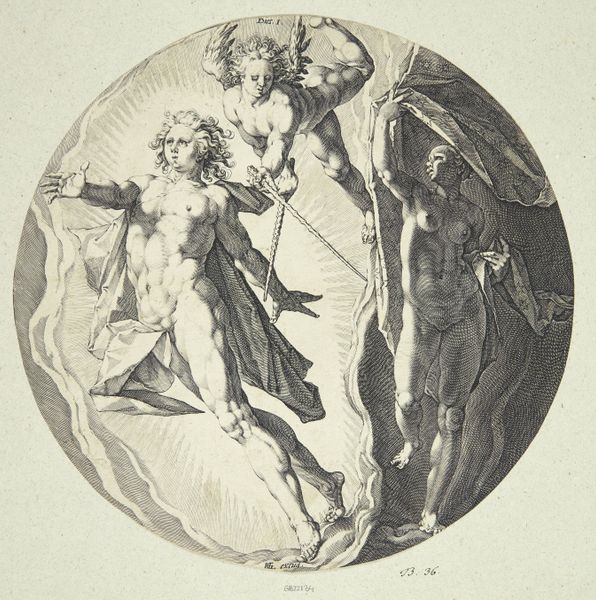
print, engraving
#
allegory
# print
#
old engraving style
#
mannerism
#
history-painting
#
nude
#
engraving
Dimensions: 170 mm (None) (bladmaal)
This print, made by Jan Harmensz. Muller around 1600, captures a scene from classical mythology with a surprising amount of detail, all achieved through the traditional method of engraving. Look closely, and you’ll see how the network of finely incised lines builds up the image. The density and direction of these lines create subtle tonal variations, giving shape to the figures of Mercury and Lara, and the landscape they occupy. Engraving is an indirect process; it requires the artist to use a tool called a burin to cut lines into a metal plate, which is then inked and printed. The graphic quality inherent in engraving lent itself well to the dissemination of imagery in the early modern period. Prints like this one allowed for stories and artistic styles to be shared across geographic boundaries. But engravings also stand on their own as objects of great skill and beauty. By appreciating the labor-intensive process behind this image, we can understand the value placed on craftsmanship during the Renaissance.
Comments
No comments
Be the first to comment and join the conversation on the ultimate creative platform.
